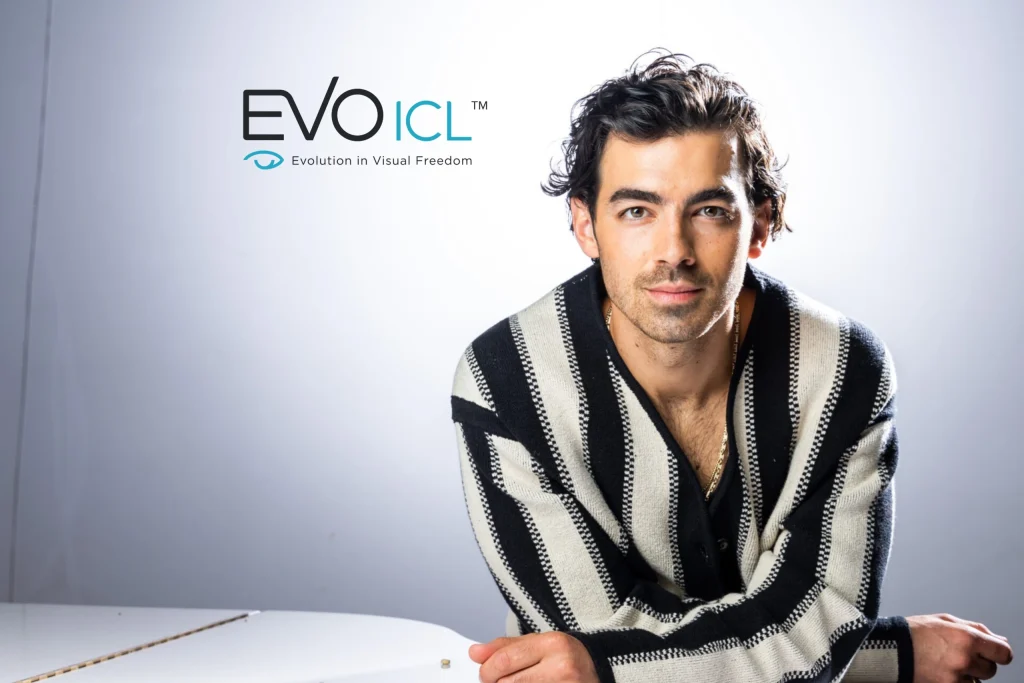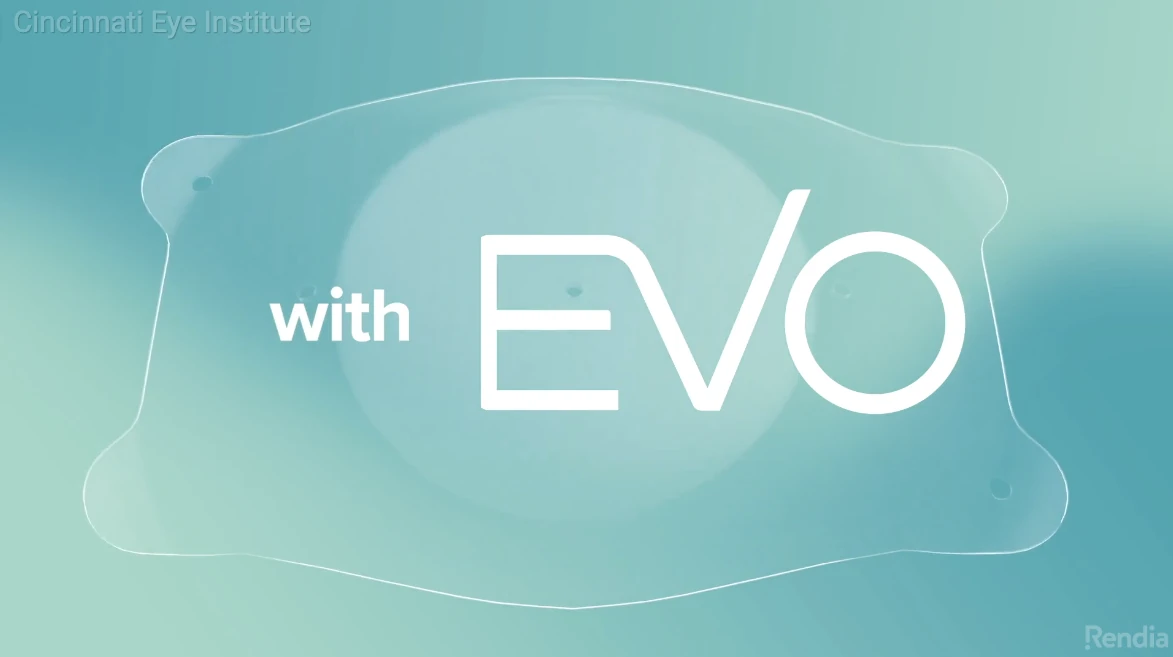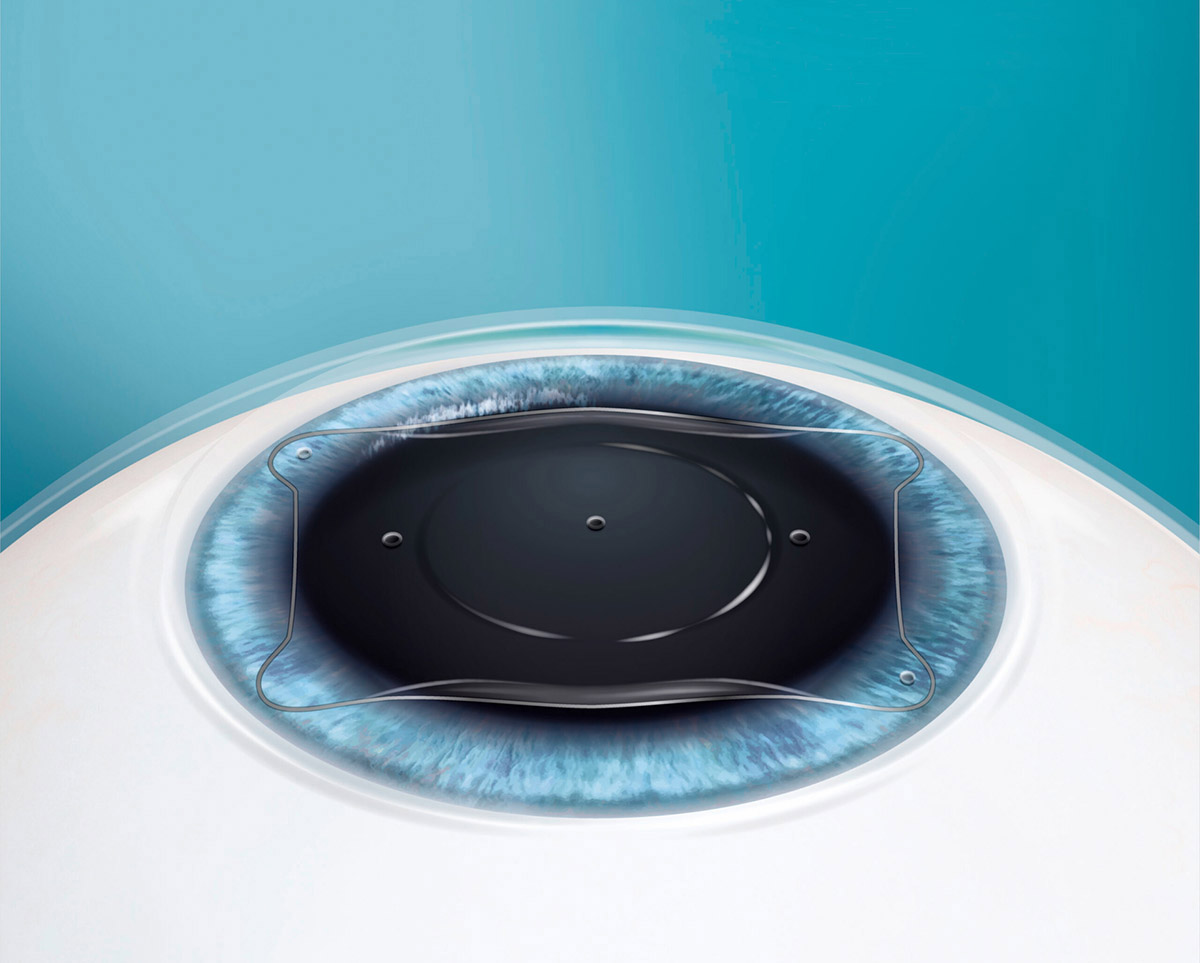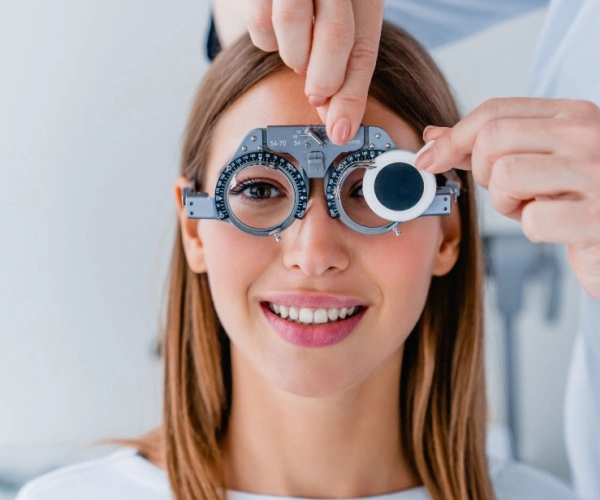Lifetime cost of glasses
and contacts:

EVO ICL™ Lens
The EVO ICL from STAAR Surgical is an Implantable Collamer® Lens, sometimes called an Implantable Contact Lens. This advanced lens is placed inside the eye to correct nearsightedness ranging from -3.00 to -20.00 diopters. Known for delivering high-definition vision, the EVO ICL provides patients in Cincinnati, Illinois, and the surrounding areas exceptional clarity and sharpness.
“EVO ICL lens has helped me live life to the fullest with no more hesitation. I simply wake up and go about my day.”
– Joe Jonas

What is EVO ICL?
EVO Implantable Collamer Lens (ICL) is an FDA-approved laser-assisted vision correction procedure designed to treat nearsightedness (myopia) and astigmatism. Unlike traditional corrective methods like LASIK, EVO ICL involves the implantation of a biocompatible lens, offering patients a long-term solution for clear vision without altering the cornea. ICL surgery is particularly beneficial for those with thin corneas or dry eyes, as it doesn’t involve tissue removal.
What Makes EVO ICL Different?
The EVO ICL stands out from other vision correction options because its advanced technology allows for superior visual quality and offers a permanent yet flexible solution for those who aren’t candidates for LASIK. Additionally, the EVO intraocular lens is designed to maintain the natural structure of your eye, resulting in more predictable and stable outcomes over time.

Biocompatibility
The EVO ICL lens is crafted from Collamer, a unique material that includes collagen, ensuring it works harmoniously with your eye’s natural structure. This biocompatibility provides optimal comfort and seamless integration, promoting long-term stability and vision clarity.

No Risk of Dry Eye
Since the EVO ICL procedure doesn’t involve reshaping or removing corneal tissue, it significantly reduces the risk of developing dry eye syndrome. This makes it an excellent option for individuals prone to dry eyes who want to reduce reliance on eye drops or those seeking a solution without this potential complication.

Reversability
EVO ICL offers long-term flexibility because it can be removed if your prescription changes significantly or if future vision correction advancements become available. This ensures you’re not locked into a permanent solution, giving you peace of mind.

Improved Night Vision
Clinical studies have shown that EVO ICL provides enhanced vision in low-light settings, delivering excellent night vision. This benefit is especially helpful for nighttime driving or navigating dimly lit environments.

How Does EVO ICL Work?
EVO ICL works by placing a thin, flexible lens made from Collamer (a collagen-based material) inside your eye, between the iris (the colored part of the eye) and your natural lens. This lens helps to refocus light precisely onto the retina, improving distance vision and eliminating the need for eyeglasses or contact lenses. The lens is designed to be invisible to both the patient and others, providing seamless and comfortable vision correction.

The Benefits of EVO ICL
- Delivers crisp, high-quality
Trusted Source Comparison of implantable collamer lens (ICL) and laser-assisted in situ keratomileusis (LASIK) for low myopia Cornea Go to Source vision
- Fast procedure; takes half hour or less
- Minimal downtime with quick recovery
- Completely removable if necessary
- Built-in UV protection for eye health
- Invisible once implanted
- Corrects nearsightedness, with or without astigmatism
- Over 1 million successful EVO ICL implants worldwide
- Does not trigger dry eye
Trusted Source Matched population comparison of visual outcomes and patient satisfaction between 3 modalities for the correction of low to moderate myopic astigmatism Clinical Ophthalmology Go to Source symptoms
- Excellent vision in both bright and low-light
Trusted Source A prospective comparison of phakic collamer lenses and wavefront-optimized laser-assisted in situ keratomileusis for correction of myopia Clinical Ophthalmology Go to Source conditions
- Ideal for patients who aren’t LASIK candidates due to thin corneas
- 99% of patients report high
Trusted Source The Implantable Collamer Lens with a central port: review of the literature Clinical Ophthalmology Go to Source satisfaction with EVO ICL

EVO ICL Procedure – What to Expect
Before your EVO ICL procedure, your eye doctor will conduct a thorough evaluation to ensure you’re a good candidate. The outpatient procedure is performed in-office, typically taking about half an hour per eye. During the surgery, a topical anesthetic is applied to the treatment area, and a small opening is made between the iris and your natural lens to insert the ICL, which unfolds gently in your eye. Most patients report little to no discomfort and can see clearly almost immediately after the procedure. You’ll be given specific aftercare instructions, but minimal recovery time is needed.
Candidates for the EVO ICL Procedure
EVO Visian ICL eye surgery candidates are typically between 21 and 45 years old, with stable vision for at least a year. Ideal candidates have moderate to severe nearsightedness (myopia), with or without astigmatism, and may not qualify for LASIK due to thin corneas or dry eyes. They should also be in good eye health and free from eye diseases or conditions like glaucoma or cataracts.
“Now I can play, exercise or dance, without worrying about my vision.”
– Jimmy O Yang, Comedian


Results and Recovery After EVO ICL
The cost of EVO ICL surgery may differ based on your specific treatment needs. Many patients find that EVO ICL offers long-term savings compared to the ongoing expenses of glasses and contact lenses. During your consultation, you’ll have the opportunity to inquire about the payment plans and financing options we offer to make the procedure more affordable.

Will Levis | NFL Quarterback
“I wanted to do what was best for me and have the best edge that I could get. When looking at all the options, it became clear that EVO ICL was the best option for me.”
Frequently Asked Questions About EVO ICL
Am I a candidate for EVO ICL?
Candidates are typically between 21 and 45 years old, with stable vision for at least a year. It’s ideal for patients with moderate to severe myopia and those who may not qualify for LASIK due to thin corneas.
How long does the EVO ICL lens last?
The lens is designed for permanent vision correction that lasts a lifetime, but it can be replaced or upgraded if your vision changes.
Is EVO ICL safe?
Yes, EVO ICL has been proven safe and effective through years of use and clinical studies.56 Over one million lenses have been implanted globally.
Will I feel the lens in my eye?
No, the EVO ICL is undetectable. You won’t see or feel the lens once it’s in place.
Does insurance cover EVO ICL?
Vision correction procedures like EVO ICL are typically not covered by insurance. However, we offer financing plans to make the procedure more accessible.
Will EVO ICL eliminate the need for reading glasses?
EVO ICL corrects nearsightedness and astigmatism but does not address presbyopia, the age-related condition that affects near vision. As a result, even after EVO ICL, you may still need reading glasses as you age. However, your distance vision will be significantly improved.
How Much are Glasses & Contacts Actually Costing You?
Please enter a valid value
Schedule an Appointment
To learn more about EVO ICL and whether you are a candidate,
please contact us to schedule an appointment with our eye care professionals.
Contact Us
1 Cornea. Comparison of implantable collamer lens (ICL) and laser-assisted in situ keratomileusis (LASIK) for low myopia. https://pubmed.ncbi.nlm.nih.gov/17172886/. Accessed September 11, 2024.
2 Clinical Ophthalmology. Matched population comparison of visual outcomes and patient satisfaction between 3 modalities for the correction of low to moderate myopic astigmatism. https://pubmed.ncbi.nlm.nih.gov/28740361/. Accessed September 11, 2024.
3 Clinical Ophthalmology. A prospective comparison of phakic collamer lenses and wavefront-optimized laser-assisted in situ keratomileusis for correction of myopia. https://pubmed.ncbi.nlm.nih.gov/27418804/. Accessed September 11, 2024.
4 Clinical Ophthalmology. The Implantable Collamer Lens with a central port: review of the literature. https://pubmed.ncbi.nlm.nih.gov/30568421/. Accessed September 11, 2024.
5 Clinical Ophthalmology. The EVO ICL for Moderate Myopia: Results from the US FDA Clinical Trial. https://www.ncbi.nlm.nih.gov/pmc/articles/PMC9738966/. Accessed September 13, 2024.
6 Frontiers in Medicine. Safety of EVO ICL Implantation With an Ophthalmic Viscosurgical Device-Free Technique in the Early 24 h After Surgery. https://www.ncbi.nlm.nih.gov/pmc/articles/PMC8635781/. Accessed September 13, 2024.
The doctors at Cincinnati Eye Institute have either authored or reviewed the content on this site.
